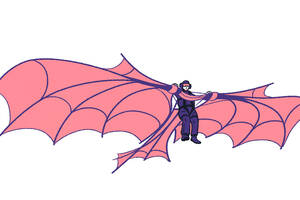Leadership Careers Feb 2, 2012
Do Black Women Have More or Less Freedom as Leaders?
Understanding the roles of race and gender
It’s tough being female in a leadership position. Women’s efforts to break through the corporate glass ceiling are frequently hindered by perceptions of how they should behave. Individuals in companies and other enterprises routinely confer lower status on women—whether they are entry-level trainees or CEOs—who appear angry, assertive, or dominant—in other words, women who demonstrate characteristics that would be accepted and even applauded in men. In the 2008 Presidential primary campaign, for example, many voters who originally criticized Hillary Clinton for being a self-promoter changed their minds when she publicly shed tears, an action they saw as typical of “how women should behave.”
The implicit requirement that women climbing the organizational ladder should avoid the go-getting behavior that psychologists call “agentic” echoes provisions often applied to black men, another group underrepresented in the corridors of power. But since research on the gender disadvantage has focused almost exclusively on white women, an intriguing question arises: how will black female leaders, who carry the double stigma of race and gender, fare when they show agentic behavior? Will they suffer double jeopardy, or will their gender and their race effectively neutralize each other in some way, thereby giving them more freedom to exercise powerful leadership traits than is available to white women and black men?
A Clear Answer
A new study by Kellogg researchers produces a clear answer. “If you combine two stigmatized social identities—that is, female and black—the result is not double the disadvantage of either of the stigmatized identities alone,” says Robert W. Livingston, an assistant professor of management and organizations at the Kellogg School of Management, who led the study. “In fact there is a sort of canceling-out effect. In mathematics, two negatives multiplied result in a positive, but this is an unexpected result when you talk about stigmatized identities.”
The research is ground-breaking. “It is the first experimental study examining the simultaneous impact of race and gender on leadership outcomes” says Livingston, who carried out the study with Ashleigh Shelby Rosette, an associate professor at Duke University, and his doctoral student Ella Washington.
It is hardly surprising that the subject has not been studied before. Very few black women have made it into prominent leadership positions in the corporate world. In fact the only such CEO of a Fortune 500 company—Ursula Burns at Xerox, where she is also chairman—seems to break the mold of the non-agentic woman. Burns is “known as someone who is assertive, outspoken, and even confrontational at times,” Livingston and his colleagues write.
Two Competing Theories
Livingston and Rosette had begun their project before Burns’s appointment in 2009. They had decided to test two competing theories about the treatment of prominent black women. The “double-jeopardy” hypothesis posits that black female leaders would suffer from both their gender and their race when behaving agentically. The “interactive” prediction, on the other hand, indicates that black women’s “dual subordinate identities assign [them] to a unique space,” Livingston’s team writes. By rendering them “invisible,” that assignment means that “black women may be buffered from many of the racial hostilities directed toward black males,” they add.
“Specifically, we reason that black women may indeed suffer penalties, and perhaps double penalty, for making mistakes on the job. Because they are two degrees removed from the white male leader prototype, any mistake might be interpreted as evidence that they are not suited to the leadership position.”
The team’s project explored the extent to which identical behavior by individuals of different races and genders produces different perceptions. The project involved a scenario in which a fictitious senior vice president at a Fortune 500 company met an employee who did not meet the company’s expectations. The researchers randomly assigned 84 non-black volunteers to study eight different identities for the senior VP: white or black, male or female, and dominant or gentle leadership style. The volunteers were then asked for their perceptions of the leader and her or his behavior.
A Statistically Significant Result
The result was plain. “There was a statistically significant decrement in the evaluation of black men and white women leaders when they employed a dominant leadership style, whereas there was no penalty—that is, no lower evaluation—for white men or black women who exhibited a dominant leadership style,” Livingston recalls. “[T]he novel contribution of our study is that we did not find evidence of an agency penalty against black female leaders,” he and his colleagues write. “Rather, black female leaders produced the same pattern of response as white male leaders.”
Still, the news is not entirely positive for black women. “Even though they don’t suffer penalties for dominant behavior, this doesn’t mean that they don’t suffer other types of penalty,” Livingston explains. “Specifically, we reason that black women may indeed suffer penalties, and perhaps double penalty, for making mistakes on the job. Because they are two degrees removed from the white male leader prototype, any mistake might be interpreted as evidence that they are not suited to the leadership position.”
Nor does the relative freedom that black women have to behave assertively once they become leaders indicate that they are more likely to reach those positions in the first place. “The fact that there has been only one black female CEO in the entire history of the Fortune 500 rankings is clearly indicative of that,” Livingston says.
Unique Challenges
Livingston sees two take-away messages from the study. “One point is that minority leaders face unique challenges because they are not seen as ‘prototypical’ leaders. That is, when someone thinks ‘leader,’ they typically don’t think ‘woman’ or ‘black;’ therefore minorities don’t always enjoy the same level of perceived legitimacy as white males when they occupy these positions,” he explains. “This can affect the types of leadership styles that are available to them. They often have to adopt more democratic, as opposed to autocratic, styles of leadership, because followers may be more willing to challenge their authority or legitimacy if they are forceful.”
“A second point is that the story is not the same for all minorities,” Livingston continues. “Black female is not equal to black plus female. Black women face less of an agency penalty because they are not the prototypical ‘woman’ or prototypical ‘black’. Moreover, the mechanisms underlying disadvantage for black men and white women may be quite distinct.”
As the first project of its type, the study inevitably raises fresh questions for further research. “One challenge will be to gain a greater handle on the complexity of dual social identities and how they impact the outcomes of leaders,” Livingston says. “We plan to conduct additional laboratory research in addition to field studies of actual women leaders in organizations.”
Related reading on Kellogg Insight
The Teddy Bear Effect: Does a babyface benefit black CEOs?
Nice Guys Finish Last: Altruism may be rewarded with prestige, but seldom with leadership
Stacking the Deck Against Racism: A psychological explanation for impartiality
Livingston, Robert W., Ashleigh Shelby Rosette, and Ella F. Washington. 2012. “Can an Agentic Black Woman Get Ahead? The Impact of Race and Interpersonal Dominance on Perceptions of Female Leaders,” Psychological Science, 23(4): 354-358.


